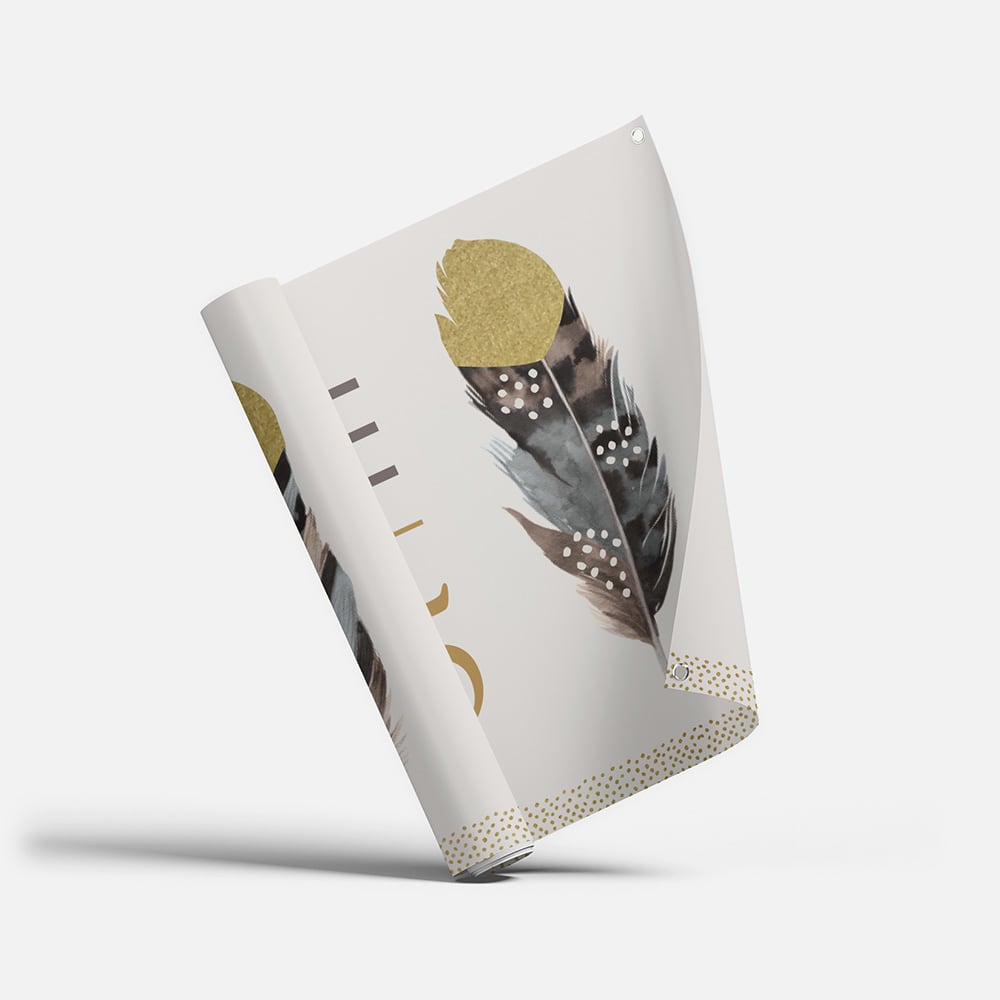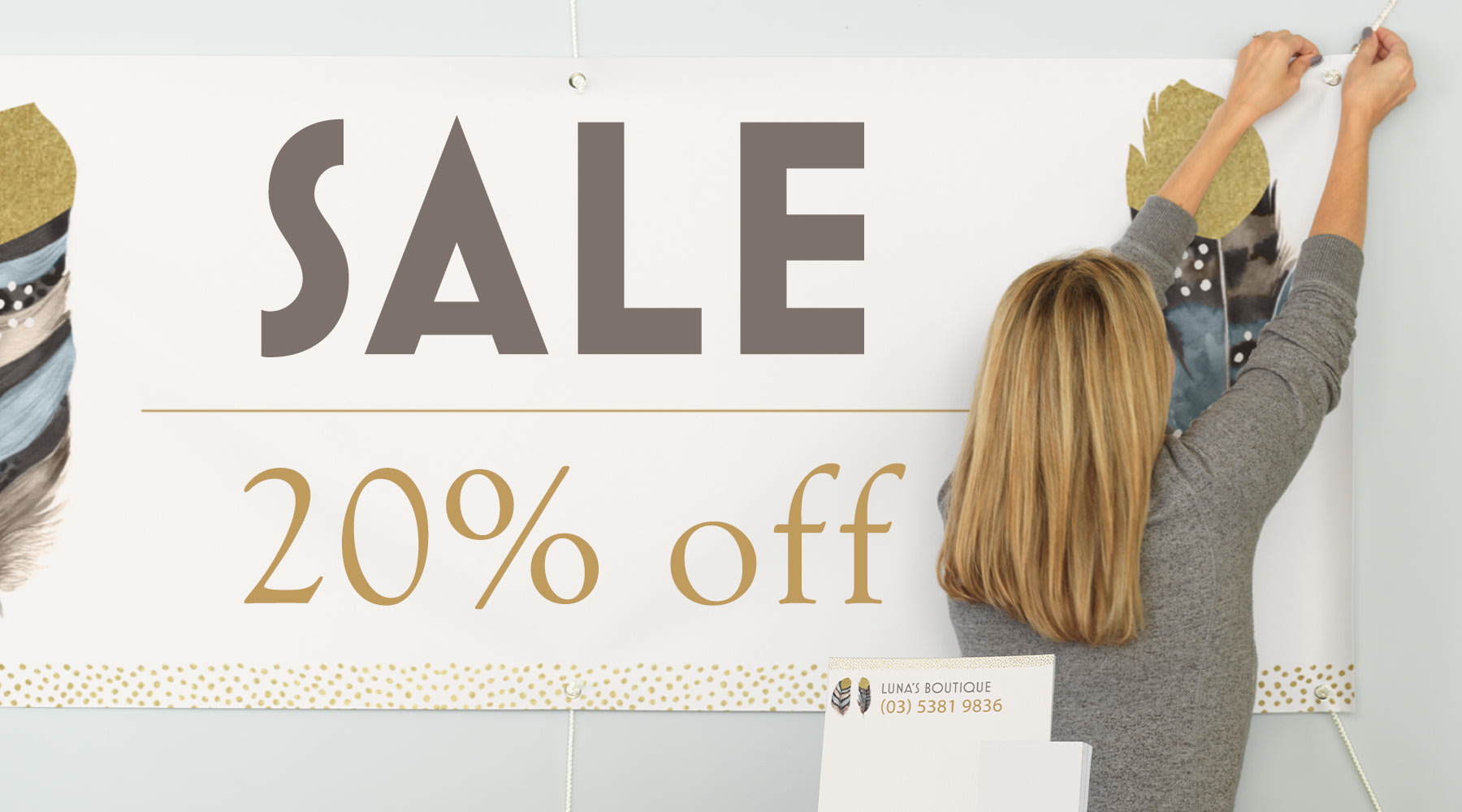Estimated reading time: 5 minutes
When it comes to promoting your business, your first aim should be to catch the eye of passers-by. And when it comes to attracting people’s attention from a distance, banners are one of the most direct and effective options.
But if you’re wondering how to make your own banner, then fear not, as they’re easier to design than you think…all it takes is a little planning and keeping a few key tricks up your sleeve. Here’s how to create a banner that’ll turn heads and get you noticed.
- Decide where your banner will go.
- Keep your message simple and focused.
- Create visual and narrative hierarchy.
- Choose a legible font.
- Use colours to create contrast.
- Select a design template.
1. Decide where your banner will go.
The place you plan to hang your banner will influence your sign’s size, colour, messaging and material, making this the first step when it comes to knowing how to design a banner. Will your banner be above your shop door, at a sporting event, at a farmers’ market or in a window display? A double-sided banner could be perfect if you want to communicate a message to customers inside *and* outside your shop, while a retractable banner is perfect for taking along to trade shows and markets.
Depending on the placement, consider what your audience will be doing when they read your banner — standing, walking, driving, sitting on a train — and how far away they’ll be. This impacts things like the size of the banner, whether you go vertical or horizontal, the font you use and how many words you’ll have to play with. You should also consider the background behind the banner (leafy trees, red brick, white walls?). You want your banner to stand out against its backdrop. It all goes back to catching your customer’s eye.

VistaPrint Tip
Where you place your banner will also determine the material you use. Though outdoor banners, like vinyl and mesh options, can be used inside as well as out, indoor banners don’t do so well when exposed to the elements.
2. Keep your message simple and focused.
Every banner should have a main purpose…so, decide on the one thing you want people to do once they see your banner. For example, you might want people to step into your shop, request a quote or visit your website — whatever your banner’s aim, make sure your call to action is clear and concise.
When it comes to words, less is more. Most people will see your banner from a distance (and maybe only for a split second, if they’re on the move), so make sure they can grasp your message. Choose short, direct, easy-to-read statements, and avoid unnecessary words — if you can cut out a word and your message stays the same, then do it.
3. Create visual and narrative hierarchy.
The order of your messaging and information — the hierarchy — will have a big impact on your banner’s effectiveness. Give prominence to key information and make sure that your main message stands out, whether it’s through an enlarged photo or a bolded headline.
Arrange the remaining elements (like secondary information or additional details) around this main focal point in a smaller typeface.

VistaPrint Tip
If you’re using images on your banner, make sure they’re high resolution and high quality. You want them to look crisp and clear when printed in a large size, so always use original, uncompressed files for best results.
4. Choose a legible font.
Going for classic, bold fonts like Helvetica, Century Gothic and Verdana will help give your banner a professional look and feel, while keeping readability high. As tempting as it might be, avoid playful and unusual fonts — your customers will have a harder time reading what you have to say.
Your banner will typically be seen from a longer distance, so think big when it comes to font size. Additionally, try to avoid a mishmash of font sizes…stick to a maximum of three to keep your design from looking chaotic.
5. Use colours to create contrast.
While you generally want to keep your banner on-brand and use the same colours you use elsewhere in your marketing, it’s important to pay special attention to how you combine them. As a general rule, you want high contrast between the letters and the background, so go for a dark font on a light background, or vice versa.
Similarly, try to avoid pastels, as they tend to blend in with the background, and go for brighter colours instead. If your brand colours are soft and light, just create a bolder version of the same hue to ensure higher contrast on the banner.
6. Select a design template.
Now that you know how to make a banner that stands out, it’s time to put the pieces together into a final design. The simplest way is to start with a customisable template — then, add your messaging, choose your font, upload your logo and tweak the layout until it’s perfect for your business.
Alternatively, if you already have your own complete banner design, you can simply upload it onto the banner of your choice. In our experience, Adobe Photoshop and Illustrator files are the best formats to use when uploading your design.
VistaPrint Tip
Want to leave the design work to a professional? Find a designer to bring your banner vision to life at 99designs by Vista.